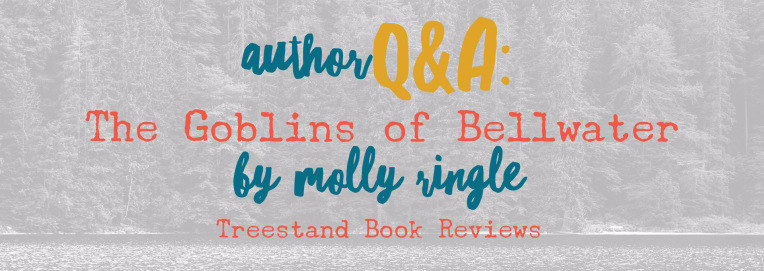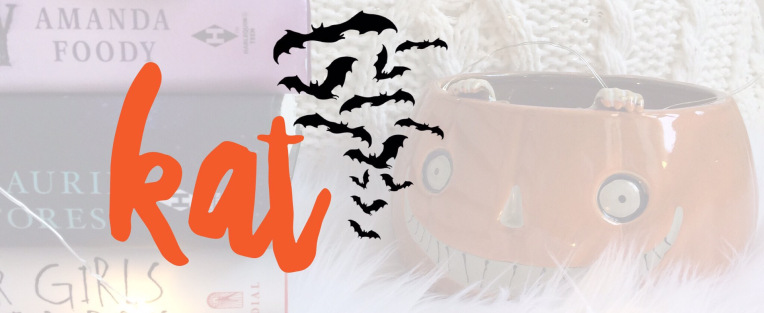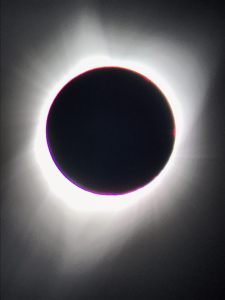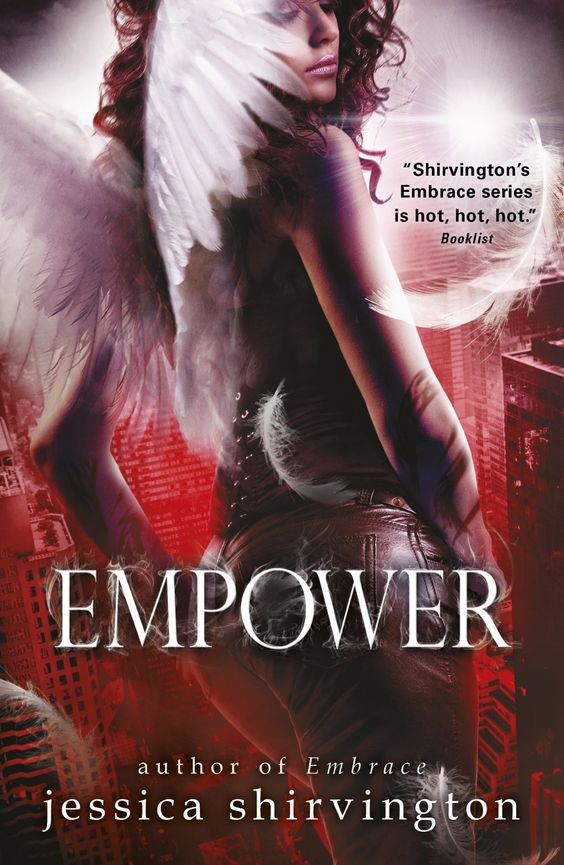
Hello Booklovers!
I don’t know about you, but I have been on such a reading kick this past week! Since most of you know I am in my final year of college, my schedule hasn’t been as lovely to me when it comes to finding time to reading. BUT I have to attribute most of my past week’s success upon the oh-so-convenient-ness of Audiobooks.
I can’t tell you why it took me so long to hop on this reading train, but I have to say that if you’re dying to add more YA into your life, but you feel like you don’t have the time to squeeze in a little Me-Time now and again, Audiobooks can save your book-loving soul!
So over the past week, I was able to finish four books (and counting), and one of them being The Goblins of Bellwater.
So to add onto my recent review, I have brought you a little Q&A with the author, Molly Ringle!
*There are no spoilers in this post, so feel free to read my review OR this Q&A first!

“A contemporary romance inspired by Christina Rossetti’s eerie, sensual poem, “Goblin Market.” Four neighbors encounter sinister enchantments and a magical path to love in a small, modern-day Puget Sound town, where a fae realm hides in the woods and waters…
Most people have no idea goblins live in the woods around the small town of Bellwater, Washington. But some are about to find out.
Skye, a young barista and artist, falls victim to a goblin curse in the forest one winter night, rendering her depressed and silenced, unable to speak of what happened. Her older sister, Livy, is at wit’s end trying to understand what’s wrong with her. Local mechanic Kit would know, but he doesn’t talk of such things: he’s the human liaison for the goblin tribe, a job he keeps secret and never wanted, thrust on him by an ancient family contract.
Unaware of what’s happened to Skye, Kit starts dating Livy, trying to keep it casual to protect her from the attention of the goblins. Meanwhile, unbeknownst to Kit, Skye draws his cousin Grady into the spell through an enchanted kiss in the woods, dooming Grady and Skye both to become goblins and disappear from humankind forever.
It’s a midwinter night’s enchantment as Livy, the only one untainted by a spell, sets out to save them on a dangerous magical path of her own.”

I call this a book “inspired by” Rossetti’s poem rather than saying it’s “based upon” it, because I did veer from the poem a significant amount. I first read the poem a few years ago, and it intrigued me deeply. It’s evocative and strange, and, like a fairy tale, has many symbols and events that could be interpreted as having several different meanings. My assignment to myself was to use it as a jumping-off point for a modern paranormal novel, which would then go its own way as the plot required. What I kept from the poem was the basic surface framework: we have a pair of sisters, grown but on the young side, one of whom becomes enchanted by eating goblin fruit in the forest and begins wasting away as a result, alarming the other sister into seeking a way to save her. Since Rossetti’s poem ends with a fast-forward to the women being “wives” and telling their children about their adventures, and since I wanted to write a paranormal romance anyway, I gave my modern sister characters a pair of men to get involved with, in a double love story with eerie angles that I think match the eeriness of the original poem. Mind you, another interpretation of the poem is that the two women aren’t really sisters but lovers, which would be a different route to take and which I think would be lovely to see too!For those of us who haven’t been there, what is Puget Sound like and why did you choose it as a setting for a retold fairy tale?
Puget Sound is a vast area of Pacific seawater, meandering into countless inlets and coves in skinny, deep fjords left behind by glaciers. Seattle and Tacoma and Olympia lie on its shores, on some of its largest bays, but it also has many wilder and more rural shores, especially on the western side where it backs up against a huge national forest on the Olympic Peninsula. That’s the region where my grandparents bought a vacation cabin decades ago, and where my family has been going for many vacations ever since. I can safely say it’s one of my favorite places on Earth. In order to agree, you have to enjoy a cool, rainy climate and all the thick moss and ferns and mushrooms and huge evergreens such a climate produces, and I happen to love those things. Fairy tales, at least those from Northern Europe, almost all involve a deep dark forest. That’s where the faeries, witches, werewolves, vampires, elves, and all the other interesting beings live. Everyone knows that. I haven’t spent much time in the forests of Europe (alas! I will someday), but I reckoned our Pacific Northwest deep dark forests were more than adequate for housing supernatural creatures. My grandmother used to tell us that the mossy ruins of big tree trunks in the Puget Sound forests were the homes of Teeny-tinies, whom I always took to be faeries. So I set the story there, at the edge of the Sound, where saltwater meets woods and where the Teeny-tinies live.What is the significance of the four elements (Earth, Air, Fire, Water) in this story?
The four elements are common fixtures in many ancient cultures, and have remained popular into the modern day. One of my favorite TV shows is Avatar: the Last Airbender, which uses the four-element framework brilliantly in its world-building. In reading up on faery lore for this book, I found that scholars often classify types of fae under the four elements, and since that appealed to me, I did the same. As one of the characters in The Goblins of Bellwater muses, there’s something human and emotionally real about looking at nature that way, even if we technically know, thanks to science, that nature contains far more than four elements. And in my novel, the only way to break the goblin spells involves respecting and trusting each of the four elements, even when they’re at their most daunting.Why do you think fairy tale and other myth and legend retellings are so popular right now?
I think they’ve always been popular! Maybe it’s a case of selection bias, because I personally have always been into ghost stories, fairy tales, and other supernatural lore, but it seems to me that human culture has never stopped telling such stories. As scholars of fairy tales will tell you, reading and writing about fantasy and the paranormal may look like escapism from reality, and sometimes I tell myself that’s what I’m doing, but in truth these stories end up giving us all the useful lessons about real life that any good stories do: empathy, courage, love, respect for nature and community, and the importance of thinking fancifully and creatively.What are the goblins like in this book?
In keeping with both the “Goblin Market” poem and the bulk of faery lore, they are mischievous and villainous. They laugh a lot, but they are decidedly laughing at you, not with you. They steal, and in particular they lust after gold. Like other fae, they enjoy making deals with humans, but humans would be wise not to enter into such deals, as the obligation tends to be heavier than it sounds at the outset. These goblins go further than merely theft, too; they assault and sometimes steal away humans and turn them into fellow goblins, and at other times enchant them into wandering unhappily in the woods until they waste away and die. Although the goblins are sometimes amusing in their level of witty rudeness, they are nearly all amoral and highly dangerous to get involved with. Only a scant few of them, who were once humans, manage to retain any human empathy. However, not all of the fae in my book are this cruel—the goblins are the worst of the lot! Others are willing to be quite helpful to humans as long as they are respected in return.What kind of magic system does this book involve?
In this book, my main characters are ordinary humans who can’t do any magic, but they become involved in the dealings of the fae realm, which is a bit like another dimension. It can be entered or glimpsed by summoning the fae (which includes goblins), who might or might not answer you. But you’re luckier on the whole if they don’t, because many of them are treacherous, and the realm itself is a wilderness containing many uncanny dangers. From the point of view of the human characters, the magical rules and the cultural norms of the fae are nonsensical, almost inexplicable, but since some of these people have fallen under curses, they have to step in among those dangers and work with the rules as best as they can anyway.What do you find most challenging in writing a novel?
At first, it’s usually getting to know the characters. I tend to start with a general idea of who they are, but then when I begin writing, I realize there’s too much I still don’t know about these people and therefore they aren’t coming across as real yet. It slows me down in the early stages while I take breaks to write notes in which I interview them and figure them out. I also have a perennial problem with writing antagonists. They have to do fairly awful things (being antagonists and all), but I still want them to feel like real people (or other beings), and therefore I have to get into their heads and figure out why they would feel justified in doing such a thing. It’s not a comfortable place for my mind to go. I suppose that’s why I gravitate more toward romance and lightheartedness: I much prefer spending time with those who love and laugh.What are the easiest parts of writing a novel for you?
No part of the process is exactly easy. But sometimes lines will occur to me seemingly out of nowhere when I’m writing, and they’re perfect for the moment; or I’ll find my characters talking to each other in my head when I’m not writing. And I love those moments, because for them to have come to life in my imagination like that, it means I must have done sufficient groundwork in figuring out the world and the characters. So although the groundwork is the hard part, it pays off and leads to easier parts later!How did the writing of this novel, a fairly short stand-alone paranormal, compare to the writing of the Persephone trilogy?
It was far simpler! The Persephone’s Orchard trilogy had dual timelines, for one thing: the ancient world in Greece, and the reincarnations of those people in the modern day. For another thing, it had far more characters, both in original and reincarnated versions. And for any series, you need to have plot arcs that stretch over the whole series as well as smaller ones that get wrapped up within each volume; and you have to keep the whole thing internally consistent in terms of mood and themes and character personalities. It turned out exhausting enough that I didn’t want to write another series again anytime soon. So I picked The Goblins of Bellwater as my follow-up project: small cast, straightforward plot, and simple timeline. Most of the action takes place within about six weeks, in this small town, which is indeed a contrast to the millennia of world-spanning events covered in the trilogy!Would you want to live in any of the fictional magical worlds you’ve created?
Strange though it might sound, I’d love to visit the Underworld as I wrote it in Persephone’s Orchard and its sequels. I made it much less scary, for the most part, than it is in traditional Greek mythology; and besides that, I love caves and glowing things, and definitely would be interested in a ride on a ghost horse as long as an immortal was keeping me safe during it. As for the fae realm we see in The Goblins of Bellwater, I’d like to catch glimpses of it, and of the fae themselves, but I wouldn’t want to actually enter the realm. Too perilous!What are you writing next?
One of the genres I love, and haven’t written enough of myself, is male/male love stories, so I’ve been working on a couple of those. One is contemporary, no magic or supernatural stuff, and it’s undergoing the feedback-and-revision stage right now. Another will involve a fae realm like that of The Goblins of Bellwater, only in a new location in the world, a fictional setting I’m creating. I still have to figure out how this place works and what its magic system is like, in addition to getting to know the characters, but I’m excited about the idea and it has definitely taken root in my brain.What are the most magical places you’ve been to in real life?
Puget Sound and its surrounding forests and mountains—which is why I chose the area for the enchanted lands in The Goblins of Bellwater. Also some of the forests and meadows in the Willamette Valley in Oregon, where I grew up. Oregon and Washington are both overflowing with natural beauty and I’m spoiled to have spent most of my life here. In addition, some places in Great Britain have felt quite magical to me, such as Tomnahurich (Hill of the Fairies) in Inverness, Scotland; or Old Town Edinburgh with its many close alleys and dark medieval buildings and brick-paved streets; or Westminster Abbey, not only because of its beauty and its many graves of astoundingly famous historical figures, but because when I first visited it as a 19-year-old, I’d never been in any building anywhere near that old before (having grown up in the Pacific Northwest), and it blew my mind.
**These questions were not conducted by me, but I was able to incorporate them from the publisher!

Published: 1 October 2017
Publisher: Central Avenue Publishing
Genre: New Adult Fantasy
Pages: 288
Stay tuned for more bookish posts every week! You can subscribe below for instant links to each of my posts and help share the love of YA!
You can also follow me on Bookstagram @treestandbookreviews and Twitter @KatsTBReviews for even more exclusive content!
Until next time…
Happy Reading,






